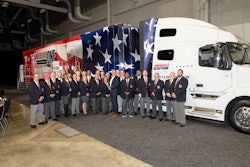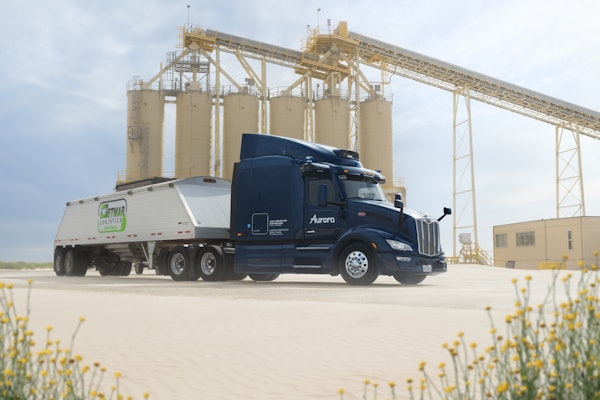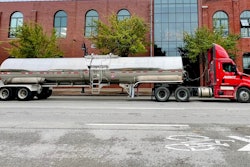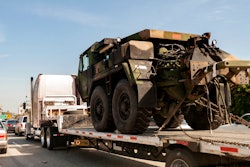
Contents of this video
00:00 10-44 intro
00:39 Driver shortage issue of quality over quantity
01:25 CDL reforms and driver retention
02:09 Removing unsafe operators from the highway
04:28 Higher pay for high-performing safe drivers
06:47 Attracting high-quality drivers to the industry
Speaker 1:
In partnership with Dyne, CCJ will host a complimentary webinar December the fourth at 1:00 PM Central time with fleet leaders to discuss the tactics that they deploy to keep drivers happy, engaged, and on the company payroll. This discussion is born from CCJs 2025, what Drivers Want report. That's a survey of company drivers and leased owner operators who shared their thoughts on pay benefits, equipment, technology, why they would leave a motor carrier and much more. All registered attendees will receive a complimentary copy of the What drivers won't report courtesy of CCJ and ndy. A link to registration can be found in description field. Below this video.
Is a COVID era scramble for truck drivers just beyond the horizon?
Hey everybody, welcome back. I'm Jason Cannon and my co-host, as always is Matt Cole. The transportation industry has been on the wrong end of supply and demand for three plus years now. And last month the American Trucking Association conceded that the long debated driver shortage, which at one point was expected to be six figures, just more than four years from right now, is more a question of quality, not quantity.
Speaker 2:
A lack of drivers this year dropped on re's list of motor carriers, industry concerns and a looming capacity crunch, driven partially by poor rates and volume, but primarily by English language. And CDL issuance reforms has placed an immediate emphasis on driver retention.
Speaker 3:
Three months ago, I would tell you that well, carriers got to do better and there's a big pool of drivers out there and there's plenty of raw material for caries to go higher. But today I would tell you that that market for available quality drivers is getting harder by the day just because the federal government's cracking down on all the non drivers. It's already happening where some of our biggest partners from our schools calling us going, I need drivers because then they're planning for 2026. They don't have enough butts to fill the seats. So the answer is changing every day as more non-qualified, non domicile. And the F-M-C-S-A has taken action here, taking drivers off the highway, which we all want.
Speaker 1:
F-M-C-S-A is poised the SAP a lot of capacity off the highway, and the hope and the expectation is that it removes unsafe operators from the road unlocking more freight and better opportunities for the carriers who do it the right way. But the end result Steve said, is going to be a race and a fight to fill the seats vacated by drivers who have been tossed to the sidelines.
Speaker 3:
I think turnover is going to increase rapidly. I think number's big. I don't think it's a few thousand. I think you're talking about if there's 70,000 non domicile drivers that were getting CDLs every year, those folks aren't going to come to the market in 2026. So forget about those new drivers. The same time the government's taking what, 15,000 to 20,000 drivers off a month. So you put those things together and it exacerbates issues. So 2026 population of CDLs, the driver is going to be down, what? 200 in 2020 now. So you got to start planning for drivers as November. You got to start planning for drivers for 2026 now, and I think that's what's happening. So what's going to happen? Driver's going to get signing bonuses again, and rates are, wages are going to come up, and I think it's going to be somewhat like COVID.
I think it's going to be like a free for all. I think we're already saying that from our partners. We're going to train 22,000 new drivers this year across our 43 states and our 150 schools. Our big partners are calling us trying to secure capacity of humans for this job right now. I think there's just going to be a cost of, the cost of turnover is going to be really high. It was in COVID, the carriers. It's not been a fun environment for the trucking industry for the last three years, but the carriers have found plenty of available labor. So if people turned over, they could easily replace 'em because look, we arbitrage the labor in the industry. Let everybody in at lower costs from everywhere. Federal government's stopping that, okay, it was okay to let the turnover go for the last three years. You always find available labor now they're going to be a pretty big price. If your drivers are turning over, we're going to go find 'em. There's not going to be that pool of available drivers because the whole bottom rung is going to get taken out. So keeping those drivers is going to be expensive. You're going to have to figure out strategies, mainly financial through pay, which is like a tax to keep 'em there, which is good for the driver, which is good for the industry. Everybody wants it safer drivers likely. So it's all good.
Speaker 2:
Bump in driver pay is almost certainly on the horizon for high performing safe drivers because Steve warns that drivers that lack English proficiency or are non domiciled CDL holders aren't the only safety risks out there.
Speaker 3:
I don't want to scare anybody, but we have an outsourced product where we score experienced drivers for large carriers. So if you're a carrier, you want to hire a new driver, you've got to create a driver, what's called driver qualification file. You got to road test everyone you hire, and a lot of small carriers and medium sized carriers do it themselves and like, well, I like Jason. So Jason score is great, and then they put you behind the wheel of the truck. You put it with the bridge. We outsource that for a lot of carriers because there's a lot of bias in there. We don't care about Jason. He's a good driver, made a bad driver. We're not here to judge. We're here to score if he can drive. So we do have a lot of carriers and a lot of shippers, 50% of those drivers at those employers get rejected because they're not safe.
Like five of them have the workforce. And I can tell you there's a massive retailer, the same thing. They have the same statistics. They do it themselves and they don't mess around because they want safe drivers. 50% of the drivers are being rejected. So the question is, where are those drivers going? They getting hired somewhere probably out of a carrier that's a small carrier that doesn't have the same rigorous scoring or valuation criteria as either the bigger carriers or really big shippers who care about these things. So you're talking about a workforce that starts off that. I don't want to scare anybody, but half of it wasn't trained at a school like ours. You get 160 hours, they're trained by some fly by night nefarious training provider or some employer who really didn't get one 60 hours of training. Then they get on the road and they don't know the basics that drive, they try and get a job with that big retailer and they can't get a job because they're not safe.
So where the guys, they're going somewhere, they're going to go work at some little carrier that doesn't have the same kind of ability. So now you're a really reputable carrier. You're not going to hire that pool. That pool's not available to you. You never hire that guy. He is not safe. So they're out. And now you're just dealing with sort of a path. The workforce is available to you. It starts dwindling. And so you just have to have better mentors. You have to have better screening. You have to have better driver qualification file or the risk becomes too high. So the whole idea of a safe driver I think in 2026 can be a much bigger topic than we've seen in a long time.
Speaker 1:
The good news Steve says is a greater emphasis on safety and a possible lift and pay will attract more high quality drivers to the industry, which he said should solve a driver's shortage thesis at both ends, both quality and quantity.
Speaker 3:
We're already seeing it. I think you're going to see more interest. Well, first of all, let's just assume that wages for truck drivers are going to come back up again. So now the industry will be like, people will be flocking to the industry to make more money. And I think if you start seeing the unemployment rate go up in other things, that truck driving might be a really good place, especially if we have hundreds of thousands of drivers coming out and it creates a need for more drivers. So the wages are going to go up. I think we're starting to see inbound demand from not only our employer partners, and we do work with the biggest carriers like they're our best customers and the biggest shippers. So we train almost all their people, train over 20,000 people this year. So when you start looking at the dynamic, we're seeing an inbound demand and what we do as a school.
But I think the difference is Secretary Duffy and the F-M-C-S-A are going to cut out all this nonsense on non-licensed schools. You have to be a licensed school. You have to be a state licensed school to do what we do. There's laws, there's statutes, there's rules, and everyone's sort of been blown that off. Hey, I can train you. It's easy. I've been driving a truck since I was been on the farm. Okay, well, maybe, but I want you to go to somewhere certified and licensed by the state to do it. So I think you're going to see a crackdown on the F-M-C-S-A. Not everyone's going to be able to do it, and it's going to drive more people to, they don't have to go to my school, but a licensed school across the country, and no more bs, no more risk taking. Who wants risk taking?
I think it's actually good for the industry. Rates will go up. You've got to pay the driver more. You the shipper's, got to pay more shipper's, got to pay more. Then there's less arbitrage. It's actually good for the industry. The idea of let's flood the industry with low cost labor and get everybody at CDL and everybody can drive. I think those days are over, clearly over. So what's going to happen now? I think these companies might have to pay the driver more. That's good for them because they have to take more rate, and I think you're starting to see that in the spot market as of this week. So I think it's healthy. It's super healthy for the industry. You're like, I don't want to pay for the driver training and all this stuff. Well net it's really good for the industry. It might take some time. So most people look for demand is building backup is industrial production. Backup is consumer behavior backup because they'll drive more demand for the industry. But if you constrain the supply of drivers, which is what's happening if you take bad drivers off the road, that too could have a bigger influence on rate and profitability of these trucking companies.
Speaker 1:
Be sure to tune into the 10 44 next week where we'll discuss with Steve how truck driver training turnover, and immigration related regulations are impacting trucking safety and recruiting. That's it for this week's 10 44. You can read more on ccj digital.com. While you're there, sign up for our newsletter and stay up to date on the latest in trucking industry news and trends. If you have any questions or feedback, please let us know in the comments below. Don't forget to subscribe and hit the bell for notifications so you can catch us again next week.











